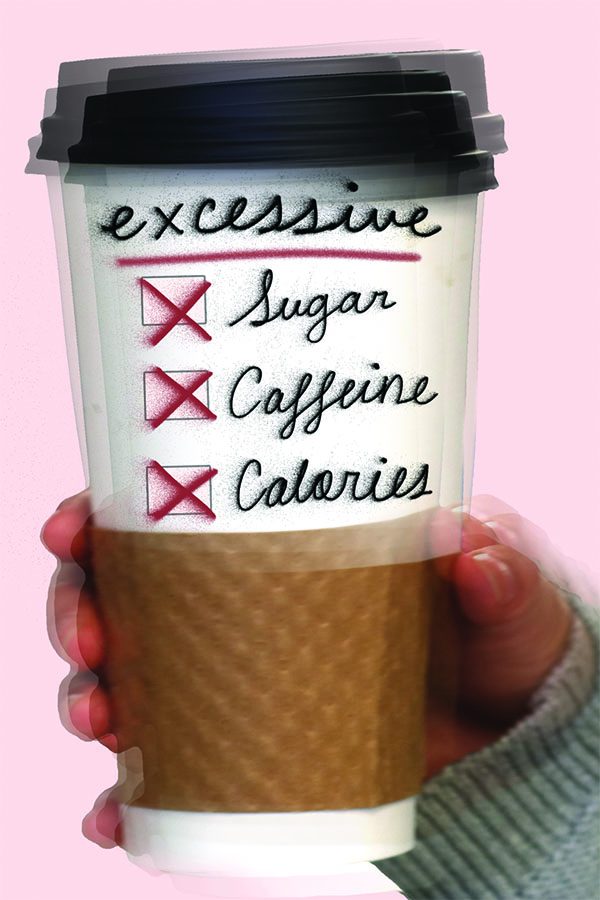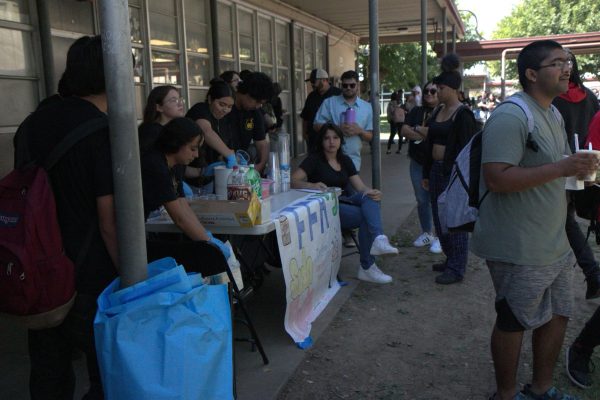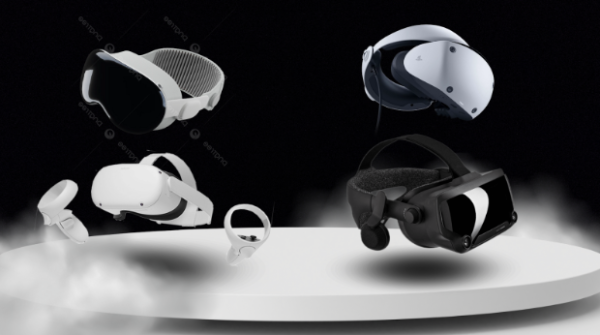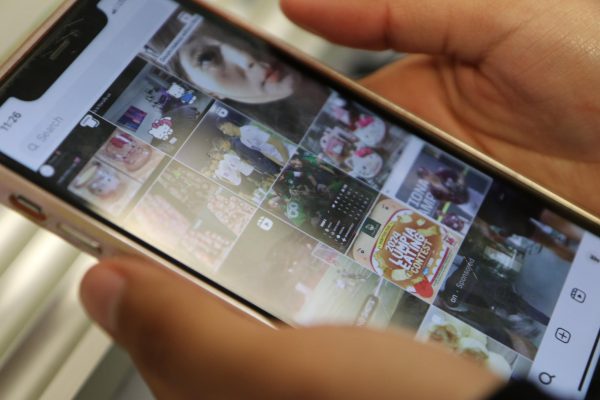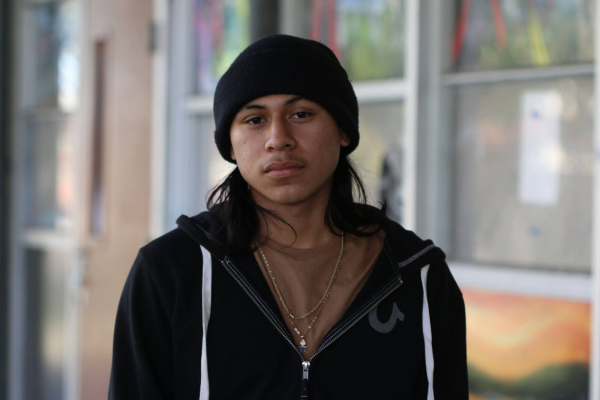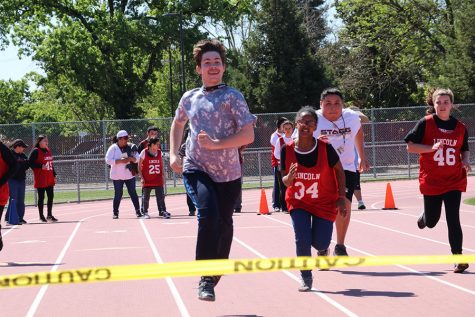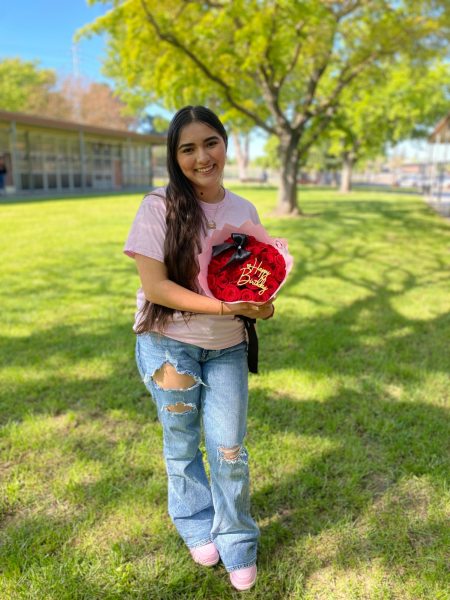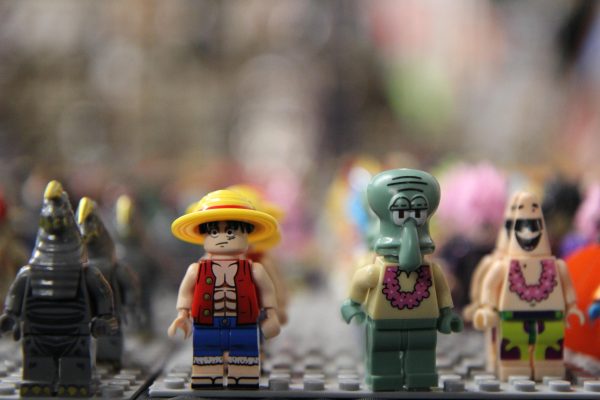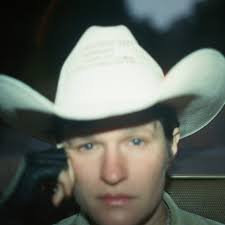Need for Coffee
Teenagers crave caffeine despite risks
He wakes up, he thinks coffee. As freshman Jesse Montenegro prepares his “cup of fuel,” his day begins.
Montenegro was introduced to coffee in the seventh grade after his grandmother, who is an avid consumer of the beverage, offered it to him. Ever since then, each morning is started with an energetic rush.
“I need it to stay awake,” he said. Though he sleeps an average of six to seven hours per night, he finds himself dependent on caffeine. “I feel tired without it.”
While his father has encouraged him to stop, Montenegro feels apathetic toward his words.
“He tells me drinking coffee will make you short, but I know that’s a myth,” he said.
Like Montenegro, freshman Maresa Reyes was introduced to coffee because of her grandmother. “I need it for the extra boost in the morning, I won’t be as alert,” she said. Reyes began drinking black coffee two years ago, while other students tend to add creamer or milk.
Without her cup of coffee she often feels restless in classes. “I can’t focus. I sometimes get headaches too.”
Although she’s aware of the effects, she continues to drink coffee. “The minimum I drink is half a cup,” Reyes said. By setting a limit to herself, she finds coffee harmless. “People should be aware of what they’re consuming,” she said referring to those that consume caffeine excessively.
For junior Aline Arias, coffee began being part of her breakfast since the second grade. “I drink coffee when I crave it,” she said. With the absence of caffeine in her system, she struggles paying attention in class. “Coffee makes me active, makes me concentrate.”
With the recurring symptoms, Arias also suffers from headaches when she ignores her cravings. “When it happens, I cut back from coffee. I turn to water.”
Senior Salvador Rivera feels that coffee makes him more attentive and eases his stress. “If I don’t have it in the morning, I’m lazier,” he said. “At night, it helps me to unwind.”
Rivera believes teenagers do care about keeping track of the amount they’re consuming, but their need for caffeine can overpower their efforts. “School is stressful,” he said. “There are assignments that have to be done so we’ll try to use any method to stay awake.”
As caffeinated drinks become more accessible, the chances of exceeding the recommended amount of caffeine are heightened. While the American Academy of Pediatrics suggests teenagers consume no more than 100 mg per day, that number is often surpassed.
This is, of course, not including the added sugar and calories that comes with creamer, syrup, and other ingredients companies such as Starbucks use to prepare their beverages. A 16 oz mocha frappuccino has 61g of sugar and 410 calories.
“Back when I was a kid we didn’t have Starbucks,” said Mary Stoner, an English teacher. Her first time consuming coffee was when she was 14, though she wasn’t immediately hooked. It wasn’t until college when she fell into the craze.
“I had coffee every day. Pop wasn’t doing it for me. I needed the extra sugar, I needed the extra caffeine,” Stoner said.
Twenty years later, she began suffering from an acid reflux. “My body couldn’t ingest coffee because of its acidity,” Stoner said, forcing her to put an end to her usual routine.
As reported by the Mayo Clinic, effects of coffee consumption include migraines, insomnia, nervousness, irritability, restlessness, frequent urination, stomach upset, fast heartbeat and muscle tremors.
But those aren’t the only symptoms one has to worry about when consuming caffeine. Recently, the Council for Education and Research sued Starbucks Corp., demanding they remove acrylamide, a chemical compound, from their products or inform customers that it is used during processing. Acrylamide can potentially cause cancer.
While Stoner believes it’s important for establishments to warn consumers if there are any harmful substances in their products, she also feels consumers must be mindful about what they put into their body.
“There’s not enough moderation in our society.”

